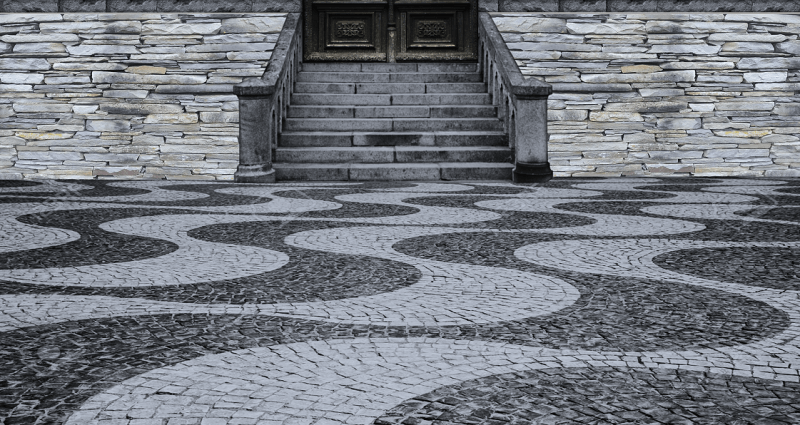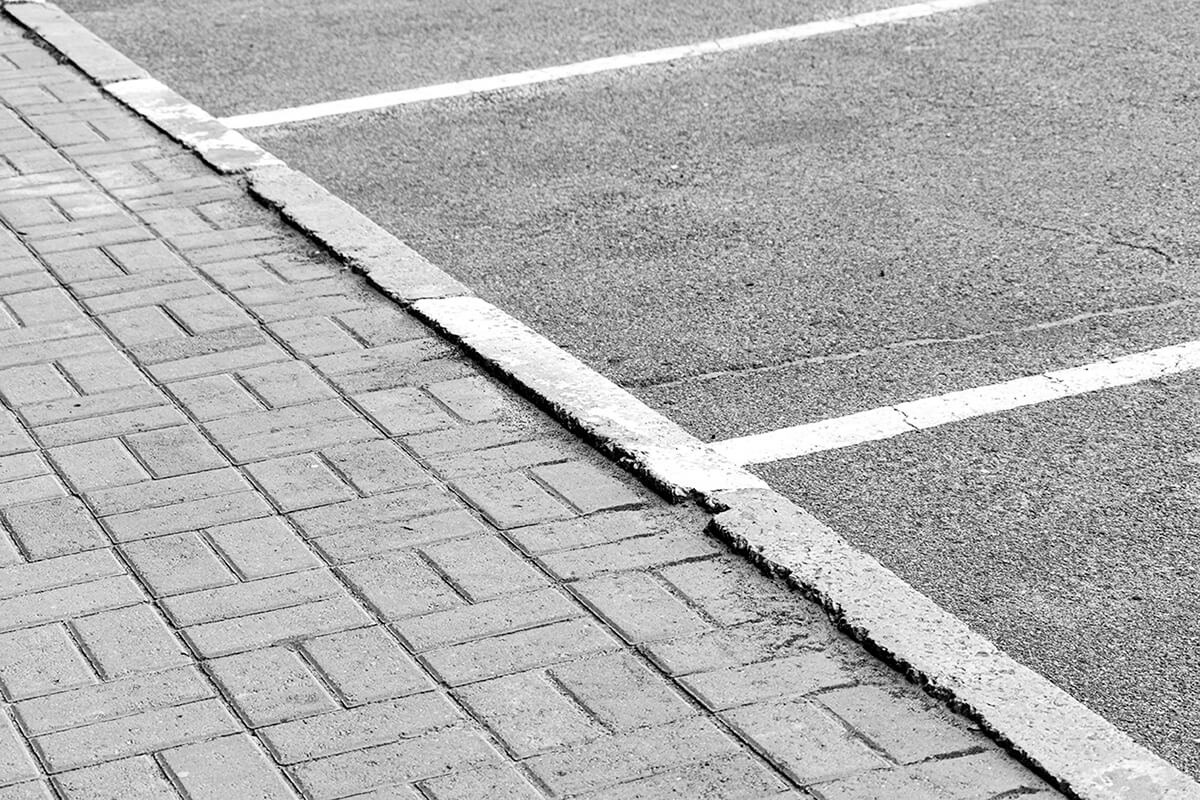Transforming your outdoor space with modern interlock stone designs not only elevates the beauty of your home but also enhances its functionality.
Whether you’re contemplating a new patio, revamping your driveway, or adding elegant pathways through your garden, interlocking stone offers durability and style unmatched by other materials.
Interlocking stone pavers offer an amazing landscaping material for your home. They are a durable and low-maintenance alternative to other paving and landscaping options. And they come in countless styles to enhance your home’s appearance, boost curb appeal, and increase your home value.
From driveways, patios, and pool decks, to water features, fire pits, and terraces, there are many landscaping features you can add to your home to enjoy this summer and all year long.
Consider Ottawa interlock landscaping and construction to improve the look of your home this summer, and to reap the many benefits of this landscaping material.
How Are Interlocking Pavers Made and Placed?
Interlocking pavers are made of concrete and come in a variety of shapes, sizes, colours, textures, finishes, and seals.
During installation, your landscaper will fill in the paver joints from top to bottom with paver jointing sand, locking the pavers into place.
The friction in the joints disperses any weight load over a greater area allowing the interlock pavers to handle the heavy weight of vehicles, furniture, and large crowds. The even weight distribution makes these a durable option for paving and landscaping.
Uses in Design and Landscaping
The true joy of working with interlock stone lies in its limitless design possibilities.
From geometric patterns that add a contemporary edge to classic layouts that evoke timeless elegance, these stones can be arranged to fulfil any vision. For homeowners looking to blend functionality with style, interlocking stones offer a solution that transforms ordinary spaces into spectacular landscapes.
Amongst its many uses, interlock stone is used in home design and landscaping for:
- Grass lawn replacement;
- Walkways;
- Driveways;
- Patios;
- Retaining walls;
- Garden borders;
- Fireplaces;
- Fire pits;
- Water features;
- Water falls;
- Pool decks;
- Kitchens;
- Indoor flooring;
- Terraces;
- Pavilions; and,
- Platforms for hot tubs, water features, and plants;
Interlock Stone Techniques for Patios
Designing your patio with interlock stone opens a realm of possibilities.
You can choose from simple, linear patterns to intricate motifs, depending on your home’s architectural style and your taste. From herringbone and basketweave to the simplicity of a running bond, each pattern not only enhances the patio’s durability but also its visual appeal. These techniques ensure that your patio stands out as a centrepiece of your backyard, inviting relaxation and entertainment.
For a modern look, consider symmetrical designs that feature clean lines and minimalistic patterns.
Modern Interlock Designs for Contemporary Landscapes
Contemporary landscape design leans heavily on the principles of minimalism and integration with natural elements. Modern interlock designs often incorporate smooth textures and neutral colours, complementing features like stainless steel outdoor kitchens or geometric water features.
These designs not only add value to your property but also enhance the livability of your outdoor spaces.
Comparing Interlock Stone with Other Paving Materials
When compared to options like asphalt, concrete, or natural stone, interlocking stone pavers stand out for their cost-effectiveness and ease of repair. Their interlocking system allows for expansion and contraction without damage, a significant advantage over the rigid, crack-prone surfaces of traditional paving methods.
While natural stone offers a unique beauty, it can be costly and less uniform. Interlocking stone pavers provide a more controlled appearance and budget-friendly options without sacrificing aesthetic quality. They also allow for easier future modifications or expansions, something that is more complex with natural stone layouts.
Choosing the Right Interlock Stone for Your Landscape
Selecting the right interlock stone involves considering your region’s climate, the intended use of the paved area, and your personal style preferences. Opt for colours and textures that complement your home’s exterior and consider the level of traffic to ensure longevity.
Factors to Consider When Choosing Interlock Stones
From load-bearing capabilities to slip resistance, the functional aspects of your chosen interlock stones are just as important as their visual appeal.
It’s also crucial to think about the long-term, considering how the colour and texture of the stones will age with exposure to elements and usage. Additionally, it’s wise to consult with a professional who understands local weather conditions and soil types to advise on the best stone choices for durability and maintenance.
Integrating Aesthetic Appeal in Interlock Designs
Interlock stone isn’t just about practicality; it’s a way to elevate the visual appeal of your property. When choosing stones, consider mixing shades or textures to add depth to your landscape. This could be as simple as incorporating border stones in a contrasting colour or using different textures to delineate various areas like walkways from patios.
This can not only enhance the design but also create a custom look that can significantly increase your home’s curb appeal and market value.
Installation Techniques for Lasting Beauty
Proper installation of interlocking stones is key to ensuring they last and maintain their aesthetic appeal. This involves preparing a stable base, typically consisting of a compacted sub-base and a precise layer of sand. Accurate alignment and spacing are crucial during installation to ensure the interlock effectively distributes weight and withstands movement and pressure.
Advanced Interlocking Techniques for Enhanced Durability
For areas that will endure heavy traffic or severe weather conditions, consider advanced interlocking techniques such as using polymeric sand in the joints. This type of sand contains additives that, when activated by water, bind the sand particles together, creating a firm bond that resists weeds and prevents the infiltration of ants and other pests.
The Role of Proper Drainage in Interlock Stone Installation
Ensuring proper drainage is another critical aspect of installation. Interlock stone projects should be designed to direct water away from buildings and prevent pooling on the surface. This not only protects the structural integrity of the installation but also enhances safety by preventing slip hazards.
Cost-Effectiveness of Interlock Stone Over Time
While the initial cost of interlocking stone might be higher than some other materials, the long-term savings are significant.
Its durability reduces the need for repairs, and its ease of maintenance can diminish ongoing costs. Furthermore, the timeless appeal of interlock stone ensures that it never goes out of style, unlike more trend-specific landscaping choices.
Conclusion: Transform Your Home with Interlock Stone
Embracing interlock stone in your landscaping and construction projects not only enhances the beauty and functionality of your home but also adds value and sustainability. With its endless design possibilities, ease of maintenance, and durability, interlock stone is a smart choice for homeowners looking to invest in their property’s future.
Whether you’re updating a driveway, creating a cosy patio, or designing a beautiful garden pathway, interlock stone offers a versatile, attractive, and practical solution that will stand the test of time.

In 2008, following a successful career as a member of the Canadian Alpine Ski Team, Jonathan Robert stepped into the landscaping industry, starting Jonathan Robert Landscapes. In the years since he’s quickly earned a reputation for high-quality work with creative designs and has been recognized in several industry-leading publications. Jonathan’s always got an eye on innovation and is always looking ahead to see what’s on the horizon in the industry. He works hard to stay on top of current guidelines, practices, and regulations. Jonathan is a member of Landscape Ontario, the International Concrete Paving Industry (ICPI), Canadian Nursery Landscape Association (CNLA), and is a Tech-Pro contractor.






